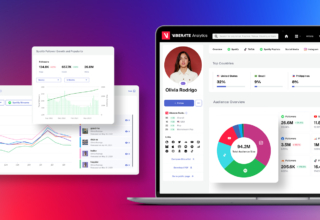
Creating an impactful trade show display is critical to stand out in a crowded exhibition hall and attract potential clients and partners to your booth. A well-designed display not only showcases your products and services but also communicates your brand story and values effectively. Whether you’re a seasoned exhibitor or preparing for your first trade show, this article provides essential tips on how to design a trade show display that is both visually appealing and strategically effective.
Table of Contents
1. Understand Your Objectives
Before diving into the design process, clearly define what you want to achieve with your trade show presence. Are you launching a new product, seeking leads, increasing brand awareness, or looking to establish industry connections? Your objectives will influence every aspect of your display design, from the layout and graphics to the interactive elements and promotional materials.
2. Know Your Audience
Understanding who you are trying to attract is crucial. Different audiences may require different approaches. For example, a tech-savvy audience might appreciate high-tech interactive displays, whereas a more traditional business audience might value straightforward information and personal interaction. Tailor your design to resonate with your target audience’s preferences and expectations.
3. Maximize Your Space
Trade show booths come in various sizes and configurations. Here’s how to make the most out of your allocated space:
- Efficient Layout: Design your space for maximum efficiency. Ensure that the layout allows for free movement and easy access to important information and products. Consider high-visibility areas for key messages and ensure that your branding is visible from different angles and distances.
- Vertical Space Usage: Don’t forget to utilize vertical space. Tall banners, hanging signs, and high-level displays can help attract attention from afar, making your booth visible over others.
4. Focus on Branding
Your display should reflect your corporate identity consistently and effectively.
- Consistent Theme: Use colors, logos, and themes that align with your corporate branding. This consistency ensures that visitors will recognize and remember your brand post-event.
- Quality Graphics: Invest in high-quality, large-format graphics that can make your booth stand out. Ensure that images are high resolution and that text is legible from a distance. Graphics should convey your key messages quickly and effectively.
5. Incorporate Multimedia and Technology
Incorporating technology can enhance the visitor experience and make your display more engaging.
- Interactive Elements: Touch screens, digital kiosks, and augmented reality experiences can provide interactive ways for attendees to learn about your products and services. These tools can also help gather attendee data for lead generation.
- Dynamic Content: Use video displays to show product demonstrations, testimonials, or educational content that can engage attendees visually and provide valuable information about your offerings.
6. Lighting Techniques
Good lighting is essential not only for visibility but also for creating an inviting atmosphere.
- Spotlight Key Areas: Use spotlights to highlight new products, best sellers, or premium offerings. This focus helps guide visitor attention to where you want it.
- Ambient Lighting: Consider soft, ambient lighting if your booth design includes meeting areas where discussions and networking will take place. This can make these spaces more welcoming and conducive to conversation.
7. Design for Engagement
Your display should invite interaction and engagement.
- Product Demos: Set up demo areas where attendees can try your products firsthand. This hands-on approach can be a powerful persuader.
- Engaging Staff: Make sure your staff is actively engaging visitors. Train them to be approachable, knowledgeable, and ready to answer questions or provide demonstrations.
8. Include Promotional Materials
While digital media are effective, traditional promotional materials still have their place.
- Brochures and Flyers: Provide takeaway brochures, flyers, or business cards that visitors can take with them. Ensure these materials are well-designed and provide contact information and a call to action.
- Giveaways: Freebies and giveaways like pens, notebooks, or USB drives branded with your logo can keep your business in the minds of attendees long after the trade show ends.
9. Plan for Logistics
- Ease of Assembly: Design your display components to be easily transportable and quick to assemble and dismantle. Modular designs can be particularly effective in this regard.
- Storage Solutions: Incorporate storage solutions into your booth design to keep personal belongings, extra promotional materials, and other essentials organized and out of sight.
10. Test and Iterate
Before finalizing your design, set up a mock display and walk through it as if you are an attendee. Gather feedback from others and make adjustments as necessary. After the event, evaluate what worked and what didn’t to refine your display for future shows.
Designing an effective trade show display requires a thoughtful approach that combines aesthetics, functionality, and strategic planning. By focusing on clear objectives, engaging design elements, and interactive experiences, you can create a trade show presence that not only attracts but also captivates and converts attendees. Remember, the goal is to make a lasting impression that extends beyond the trade show floor.


















